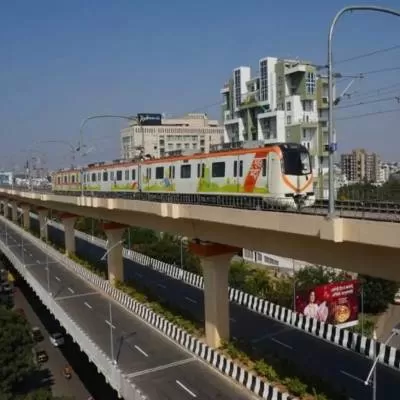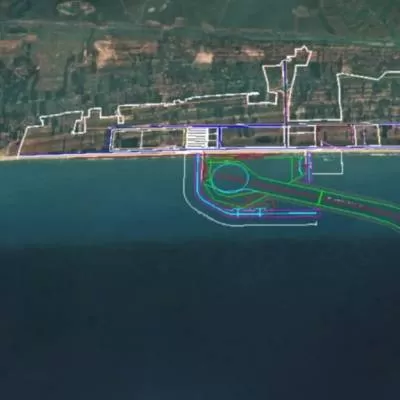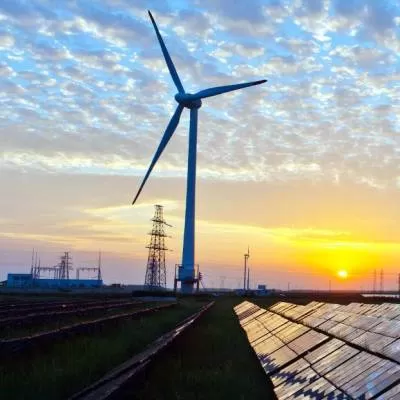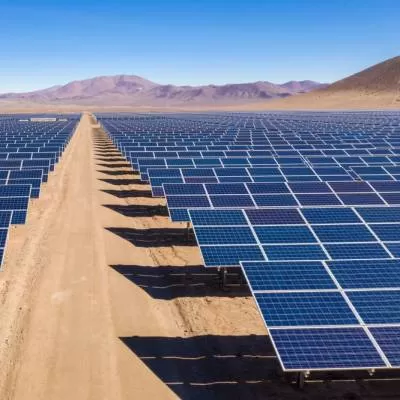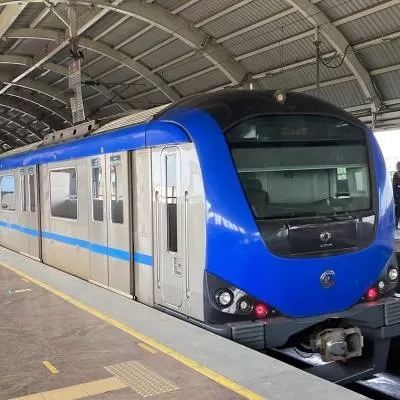Metro Next

Across 21 cities, 1,415 km of metro-rail projects worth Rs.4.09 trillion have been approved. CW explores the construction opportunities for contracting companies and supporting industries.
They say a true growth story is best reflected in numbers. Consider this: India?s metro-rail story started at 8 km in 2002. Today, the country has achieved close to 600 km. And, going forward, roughly another 600 km of sanctioned metro lines are under construction with 1,000-1,500 km of metro-line proposals under planning.
Indeed, India?s metro-rail network has grown rapidly to figure among the top 10 largest metro networks in the world.
At present, Delhi Metro is the eighth largest metro train network in the world. Recently, the Delhi Government cleared the 103.93-km, six-corridor Delhi Metro Phase IV; once this is completed, Delhi Metro is expected to become the third largest metro network in the world. With a total length of about 453.58 km, it will overtake New York (380.2 km), Nanjing in China (378 km), Seoul (340.4 km), Moscow (381 km), Guangzhou (391.8 km) and London (402 km). Shanghai and Beijing are first and second, with a total length of 644 km and 599.44 km, respectively.
The revolution
Evidently, India is going through a metro revolution today. With 600 route km being used by over 5 million commuters today, over 15 cities in India are under various stages of adding an additional 1,500 route km in the near future.
That said, not all projects have been able to achieve timely completion within estimated costs. ?The financial rate of return will be low (from +3 to negative) but the economic rate of return will be anything from 15-20 per cent,? says Dr E Sreedharan, Principal Adviser, Delhi Metro Rail Corporation (DMRC). ?This means the metro is not an attractive area for an investor but it is a social need in which the government should invest.?
For his part, Mohammad Athar, Partner, PricewaterhouseCoopers, says, ?Like most major urban transit developments, the presence of a metro corridor has induced transformations in land use in connected areas. Commercial establishments and office areas place a high premium on better connectivity and have thus benefitted from the presence of the metro. Metro-rail systems are also increasingly viewed as a more environment-friendly mode of transport and have led to improvement in air quality.?
In India, metro-rail has emerged as a preferential transport alternative in Tier-I cities faced with growing population, high traffic and increased pollution, according to Ashwini Bhide, Managing Director, Mumbai Metro Rail Corporation. ?With the remarkable success of Delhi Metro, many states including Karnataka, Rajasthan, Tamil Nadu and Kerala have rapidly implemented metro-rail projects,? she says.
And Anuj Dayal, Executive Director, Corporate Communications, Delhi Metro Rail Corporation, points out, ?Metro-rail is
non-polluting and carries a large number of people without restricting or occupying road space. Therefore, it is a potent answer to the congested roads of our urban centres.?
Demand for support industries
With metro-rail systems growing, the scope of business and opportunities for various components like lifts, escalators, elevators, tunnel ventilation systems (TVS) and environment control systems (ECS) is also expanding.
Bhide shares the example of Mumbai?s Metro Line 3 project, which comprises 33.5 km. ?This line will have 26 underground stations, attracting a great opportunity for the providers of
TVS and ECS,? she says. ?This project has a total of 162 lifts and 381 escalators of different lengths.
So, automatically, there is a huge demand for such component providers and support industries.
A lot of equipment, including tunnel boring machines (TBMs), excavators, road headers, hydras, cranes, gantries, piling rigs, batching plants, transit mixers and boom placers, are being used.?
Drawing attention to the large project development opportunities for contracting and component players across various metro packages (civil, signal and
telecom, station infrastructure, etc), Keshav Mishra, Director, PricewaterhouseCoopers, says, ?Metro stations, whether elevated, at grade or underground, are equipped with lift, travellators
and escalators, and other BMS-controlled systems. Accordingly, the opportunity for manufacturers and suppliers during project execution and for operation and maintenance of installed systems exist.?
?The increase in the number of kilometres in the metro network will necessitate more stations,? says Nalin Gupta, Managing Director, J Kumar Infraprojects. ?More stations will require more ticket counters and ticket vending machines. And the need for security and safety will require more CCTVs and related accessories.?
Arbind Kumar Rai, Deputy Project Director, CEC-ITD Cem-TPL JV, says, ?In Mumbai, the ground is mostly rocky. Therefore, for Metro Line 3 underground works, the top-down method of station construction using D-walls was ruled out and the bottom-up method with secant piles was preferred. For the same reason, we constructed circular shafts for TBM lowering. We have also used concrete walers in place of steel to support excavation and our stations are also concrete-decked.? After studying the geology of the area, the company opted for EPB TBM?s from Herrenknecht, one of the safest equipment in such an urban environment.
Meanwhile, Sunil Mathur, Director (Rolling Stock & Systems), Maharashtra Metro Rail Corporation, says, Although most metro coaches run on electric mode, energy-efficient technologies like solar panels on-site/off-site installations, regenerative braking in rolling stock and regular energy monitoring in stations make the metro system more eco-friendly. Apart from operations, last-mile connectivity through feeder buses or non-motorised transport also provides a reliable transport solution. And integration of metro stations with shopping malls and restaurants increases FSI.? He sees a bright future for foreign companies to manufacture in the country as part of Make in India.
?Implementation of a metro system includes installation of innumerable equipment along the stations, trackside, and off-site areas,? Mathur continues. ?There is a huge demand for telecom, machinery, air-conditioning systems, intelligent CCTV cameras, sensors and detection systems, which make the metro even smarter.? According to him, major equipment used in the construction of metro projects are customised as per the requirement of individual metro systems, like road-cum-rail vehicles, man-lifting cranes for installation of overhead conductors, truck-mounted cranes or hydras for installation of lifts, escalators and heavy ventilation equipment like chillers and air-handling units (AHUs).
Key offerings
As is evident, supporting industries are also set to cater to the growing demand for metro projects.
For instance, BEML has supplied metro coaches to Delhi Metro, Bangalore Metro, Jaipur Metro and Kolkata Metro (East-West project).
In fact, over 50 per cent of metro coaches being operated by
DMRC are manufactured by BEML. Currently, the company is executing contracts for the supply of metro train sets to Bangalore Metro and Kolkata Metro and driverless metro coaches to Mumbai Metro?s Line 2 and 7 projects. Further, the company is bidding for the supply of metro coaches to Phase 2 of Pune Metro and Bangalore Metro. ?Metro coaches save on electric energy owing to regenerative braking, have lower carbon emissions and are environment-friendly,? says
Deepak Kumar Hota, Chairman & Managing Director, BEML. ?The most modern driverless metro coaches result in maximum utilisation of the available network and are a safe mode of transportation.?
Otis India recently won an order for Bengaluru Metro for elevators, where units will be provided from its Bengaluru factory. The company also has 542 units at Hyderabad Metro, the largest order in the history of the elevator and escalator industry. It also recently commissioned 232 units for operation at Delhi Metro.
?Metros have also turned to Otis?s flagship product, the Gen2 elevator,? says Sebi Joseph, President, Otis India. ?Gen2 is designed to increase the elevator?s efficiency, safety and reliability with key components that include a coated steel belt, as well as the ReGen drive, permanent magnet machine and PULSE monitoring system.?
To help effectively manage all the elevators at a metro or railway station, Otis offers the Web-based EMS Panorama system that enables building staff to monitor, control and report on a full range of operation-critical functions for an elevator and escalator from any computer with an Internet connection. Elevators and escalators installed at metros and railways are designed and adapted for use in public spaces considering heavy peaks and other traffic patterns throughout the day.
Robbins TBMs have been successfully used in projects in Delhi Metro and Jaipur Metro, as well as a water transfer tunnel of 8.3 km in Mumbai, establishing an Indian tunnelling record of 870 m in a month ? the entire tunnelling was completed in 18 months. Recently, two Robbins 6.65-m crossover TBMs have been deployed in Mumbai Metro Package 1, performing over 250 m per machine per month. And Mumbai Metro Package 3 has two Robbins 6.65-m slurry TBMs running in its starting stages. Commenting on the Bangalore Metro, Kapil Bhati, Managing Director, Robbins India, says, ?We have completed back-to-back operations on per-metre basis, including all manpower and procurement of materials for the complete drives from Chickpet to Majestic Drive in the difficult geology of Bangalore Metro Phase 1.?
For Nagpur Metro, Siemens provided the modular and future-proven Trainguard MT automatic train control system. The East-West Corridor will have 19 stations
and the North-South Corridor 17 stations, linking the airport with the Automotive Square at the north of the city. The communications-based train control (CBTC) solution can enable headways of 90 seconds or less with precise train detection achieved through a digitalised track database, enabling an increase in the frequency of trains. ?The metro will play a pivotal role in enhancing quality of life and economic growth of the city and region,? avers Tilak Raj Seth, Executive Vice President, Siemens and CEO, Mobility Division. ?Mobility is an area of expertise for us and Siemens will continue to partner with the government to help improve connectivity and public infrastructure.?
Meanwhile, Voltas has successfully completed and handed over eight underground stations of DMRC and its execution work for the TVS package for six underground stations of Kolkata Metro is in progress. The company has executed works for 19 underground stations of Chennai Metro (station air-conditioning for all 19 stations and electrical and mechanical (E&M) works for seven out of these 19 stations), eight underground stations in Delhi Metro (station air-conditioning and tunnel ventilation works) and E&M works for six elevated stations in Kolkata Metro. ?We are now in a position to offer ECS, TVS and E&M packages, which are the major services packages, for upcoming metro projects,? says B Ravindranath, Senior General Manager-Infrastructure Projects, Voltas.
?It gives us a competitive advantage in the sense that only Voltas, and a few others, have credentials to qualify for such tenders on their own.?
Investment and execution challenges
Metro projects are capital-intensive in nature, with a long construction period and traffic build-up requiring several years.
?All these issues make debt-servicing a challenge,? says Athar. ?Accordingly, metro development corporations have been exploring long-term concessional financing. Multilateral development banks like JICA, ADB and KFW have played an active role in financing several projects across Indian cities.
Hence, most projects in India have been implemented under EPC mode and with limited private-sector participation.?
For his part, Mishra shares areas for reducing delivery or implementation challenges in metro-rail projects: ?Dedicated land or RoW for construction of projects; reduction of delay in clearance of site for construction; creating space to handle equipment and materials; research on indigenisation of metro technology and products; and enabling transport and traffic management policies to enable multi-modal integration.?
?DMRC has almost completed construction of the third phase of expansion,? shares Dayal.
?In 2018-19, over 140 km of new lines have been opened. We have also received approval for the construction of three corridors under the proposed Delhi Metro Phase 4.? He points out to land acquisition as the main challenge while executing mammoth infrastructure projects within city limits.
Mumbai Metro Line 3 has successfully completed six tunnel breakthroughs till now. Out of 52 km of tunnelling for the entire project, about 22 km has been completed. Overall, approximately 35 per cent work of the entire project has been completed.
The total value of the project is 231.34 billion, of which 57 per cent is funded by JICA and the rest by the Centre and state governments. ?This project faced multiple challenges in the beginning related to land and rehabilitation, shifting of utilities, coordination with multiple agencies for various approvals, social and environmental issues and issues related to public perception,? reveals Bhide, while asserting that there have been no challenges as far as funding is concerned. ?However, this entire project is technically challenging. So, there are some interface and design-related challenges that are being dealt with judiciously.?
Nagpur Metro has a total of 38 stations, and is divided into North-South and East-West corridors. To date, it has 141 elevators and 213 escalators. As Mathur shares, the project had several challenges across various sections. For example, the foundation work needed utmost care while executing by the side of the existing Ram Jhula RoB foundation in such a manner that it did not disturb the soil strata adjoining the existing foundation. Further, the metro alignment near Sitabuldi interchange goes over railway lines, which necessitated the construction of a bridge over this section. One major challenge of Phase 1 was also the viaduct going from the airport to Sitabuldi metro station. This stretch included the 15-year-old Chhatrapati Flyover, which needed to be demolished with public support. However, all these were overcome with iconic construction engineering techniques and solutions (for details on the solutions adopted, log on to
www.ConstructionWorld.in).
As a major contributor to the metro-rail network in India, J Kumar Infraprojects is currently working on a total of nine projects across the Mumbai, Pune and Ahmedabad regions. ?We work from foundation to superstructure, ie, up-to-deck slab in case of elevated metro-rail and construction of tunnel in case of underground works,? says Gupta.
Commenting on Mumbai Metro Line 3, Rai says, ?The corridor is planned fully underground either on the edge of the existing road or along the median of the road.?
With 41 per cent of work completed, he adds that major execution-related challenges included old buildings with no record of foundations, lack of space, the shifting of utilities, and logistics for excavation and concrete.
Tata Projects recently completed Lucknow?s 3.68-km Phase 1A (underground) metro extension and Delhi?s 9.63-km Dilshad Garden-Ghaziabad New Bus Adda elevated metro extension. The company?s team is currently working on Mumbai Metro Line 4, which involves two packages of elevated viaduct of 12.5 km connecting 14 stations. In addition, it is working on Mumbai Metro Line 3, which is a package involving underground twin tunnels of 6 km and three stations. In recent months, the company has also bagged tunnelling projects for the underground section of Pune Metro ? this includes Package 1 of 2.5 km and Package 2 of 2.5 km.
?The execution of metro-rail projects in bustling urban areas requires specialised expertise and experience as additional precautions need to be taken to ensure minimal inconvenience to nearby residents and local businesses,? says Rahul Shah, COO-Urban Infrastructure, Tata Projects.
?In addition, heavy traffic flow means short-time windows, thereby making completion within stipulated timelines difficult.?
That said, clearly, the metro revolution is on ? and how!
Current challenges
Popularly known as India?s Metro Man, Dr E Sreedharan, Principal Adviser, Delhi Metro Rail Corporation (DMRC), shares the main challenges faced by metro-rail projects in the present day:
- Although the metro is a rail-based transport mode that is technically more advanced and sophisticated, the Government of India (GoI) considers it as state subject, whereas railway is a central subject. GoI controls all technical parameters, safety certification and sanctioning powers but does not take the responsibility for losses and repayment of loans.
- The Central Government does not have a long-term vision or a sound and sustainable policy (the Metro Policy of August 2017 is short-sighted and restrictive) with regard to raising funds for metro construction, meeting operational losses or building up a managerial and technical framework to complete projects in time and within estimated costs.
- GoI considers private participation a must in all metro projects knowing fully well that all PPP metro projects in the country have failed so far.
- There is no effort on the part of GoI to reduce unit costs of metro projects through tax concessions or higher equity participation.
Construction Cost and Investment Returns
The cost of a metro project depends on the geographical location as well as many development constraints and requirements.
According to Rahul Shah, COO-Urban Infrastructure, Tata Projects, ?The overall construction costs invested in materials, equipment and electrical components depend on various parameters.?
In fact, all these parameters are specified within tenders, which itself differ from one another.
Based on the data available in various DPR, Mohammad Athar, Partner, PricewaterhouseCoopers, says, ?The cost of an elevated
metro project is in the range of Rs 2.25-3 billion per km and underground metro is about Rs 5.50-5.75 billion per km.?
For his part, Nalin Gupta, Managing Director, J Kumar Infraprojects, says the overall cost invested in construction materials, equipment and electrical components, etc, on an average, is 50-60 per cent. Commenting on the per-km construction cost involved in underground metro, he shares,
?It depends upon availability of specialised machinery and equipment (owned/hired/new) and experts to operate it. As for elevated metro, it depends upon availability of machinery and equipment and experienced men and the location of the site.? He adds that the average investment return depends upon the availability of funds (capital plus interest for construction purpose).
Take the case of the Nagpur Metro project. According to
Sunil Mathur, Director (Rolling Stock & Systems), Maharashtra Metro Rail Corporation, about 10 per cent of the total project cost comprises electrical installation. ?The per-kilometre construction cost for the traction distribution system (TRD) of the elevated metro line comes to around Rs 100 million (per route km),? he shares.
Mandatory Parameters for Standardisation and Indigenisation
The Centre has issued mandatory parameters for electrical components used in metro-rail systems, like lifts, escalators, tunnel ventilation and environmental control system.
According to Nalin Gupta, Managing Director, J Kumar Infraprojects, this will result in a boom in ancillary industries.
?The notification makes it mandatory to use 50 per cent local content in compliance to public procurement, straightway promoting Make in India,? he says.
?Any mandatory technical parameters are meant to help standardisation and indigenisation,? says Dr E Sreedharan, Principal Adviser, Delhi Metro Rail Corporation (DMRC), viewing this as a correct step forward. However, he adds a note of caution: ?Our zest for Make in India should not lead to dilution of specifications, which will jeopardise the safety and reliability of the system.?
Meanwhile, Keshav Mishra, Director, PricewaterhouseCoopers, says, ?This initiative will help reduce the cost incurred for procurement (primarily design and validation), inventory management and
spare availability and enable interchangeability and reliability.?
He adds that the capabilities of ancillary industries will also improve as the requirement for standard products, components or LRU will be higher. OEMs will undertake improvements in design and focus on cost-optimisation to comply with standard procedure and safety requirements to secure compatibility and interface consistency. This will also facilitate a competitive environment and removal of trade barriers, lower the capital cost of lifts and escalators, and open the opportunity for leasing services for OEMs. However, he points to a major challenge with standardisation:
?It could limit innovation to develop or introduce a new product range owing to thin margins, limited improvement of product or service quality, and limited number of manufacturers and service providers in the market for supply and maintenance of system, equipment and components.?
As Sunil Mathur, Director (Rolling Stock & Systems), Maharashtra Metro Rail Corporation, informs us, ?The Ministry of Housing & Urban Affairs, in consultation with Mumbai Metro, has issued standardisation parameters for all electrical equipment in metro systems for easy availability of spares and special tools during operation and maintenance.? He says standardisation of lift mechanisms, like room-less elevators, VVVF motor use, safety switches and emergency mechanisms, has made lifts even safer, while standardisation of tunnel ventilation fans has made installation and maintenance easier. And the rating of chillers, fans and AHUs has an added advantage as these have a wide variety of specifications in the market.
?However, the guidelines on some equipment should be relaxed as these would be customised according to the particular city and metro project,? adds Mathur. ?For instance, tubular portals are used in the Nagpur and Pune metro projects for an aesthetic look; some standardisations of the electrical panel and switchgear equipment are new and would be designed again.?
For her part, Ashwini Bhide, Managing Director, Mumbai Metro Rail Corporation, says, ?In Metro Line 3, we are using machines keeping the mandatory parameters in mind. With this standardisation of specifications or requirements of equipment (lifts, escalators), there will be uniformity in general specifications of procurement stage. This leads to competitive prices, ease in operation and maintenance, shorter design finalisation and quicker deliveries of materials.
It will generate more indigenisation and OEMs will be assured of markets for their products developed and manufactured in India.?
As for elevators, Otis? Bengaluru factory is equipped to manufacture for this sector. ?The elevators for Bengaluru Metro will come from the Otis India facility,? says Sebi Joseph, President, Otis India. ?Our global technology transfer programmes have helped build the Make In India narrative. Such programmes help ensure that the Indian customer is offered the best tried-and-tested technology from across the world and give them the value they appreciate.?
DMRC will specify indigenised equipment such as fans, chillers, etc, for its upcoming Phase 4 work.
B Ravindranath, Senior General Manager-Infrastructure Projects, Voltas, says, ?It will help lower the overall project cost and reduce dependence on foreign suppliers for such equipment and spares.?
Voltas is currently executing tunnel ventilation projects for six underground stations in Kolkata Metro and E&M works for two underground stations and six elevated stations in Chennai Metro. The company is also executing depot building E&M works in Chennai Metro for the Phase 1A extension.
Achieving Landmarks with Technology
Afcons Infrastructure has been on the metro construction landscape since it was first introduced in India, with Kolkata Metro commencing operations in 1984. Subsequently, for Delhi Metro, the Shapoorji Pallonji Group company secured an elevated metro package in 2000 and completed the 4.5-km construction in 2003. Since then,it has completed over 42 km of elevated metro construction, underground station construction and aero-city alignment in the national capital.
At present, Afcons is building metro-rail infrastructure in Kolkata, Ahmedabad, Nagpur and Chennai. ?We have constructed over 100 km of metro-rail, and more than
30 elevated and underground stations in five Indian cities,? says R Anantakumar, Executive Vice President, and BU Head, Urban Infrastructure, Afcons, as he shares the company?s key achievements in the segment...
Success of metro-rail projects in India
In India, Metro Rail Transit System (MRTS) projects are being undertaken across 13 cities, with the plan to introduce MRTS in 50 cities.
Afcons built India?s first underwater metro tunnels for Kolkata Metro below Hooghly River in just 67 days, and is also constructing the country?s deepest metro
station at Howrah. We are among the first Indian infrastructure companies to have constructed an underground metro station without a foreign JV at Barakhamba in
New Delhi. Recently, we also completed the construction of one of Asia?s biggest metro stations, Chennai Central.
Processes or mandates for quality
An ISO 9001:2015 certified company for quality of work, Afcons is also OHSMS ISO 45001:2018 certified. We follow an approved Standard Quality Assurance plan for every project as well as specific Quality Assurance plans, which form part of our contract. Also, construction materials, including cement, reinforcement and structural steel, is sourced directly from primary manufacturers.
We ensure further quality checks in laboratories at sites as well as by third parties. Every lot of construction material is sampled at prefixed intervals and tested before use.
This streamlines the entire process and provides the best output.
Technology innovations
- We have used the under-slung method of segmental construction to facilitate lighter launching system capable of negotiating sharp curves.
- This was further improvised to negotiate portals without dismantling by temporarily raising the launching of spans and thereafter lowering them.
- We have implemented top-down methodology for underground station construction to reduce the temporary structuring requirement.
- For certain projects, we have used temporary staging to facilitate the launching of truss walk over the station location without complete dismantling.
- The extensive use of steam curing to hasten concrete curing in winters has proved effective for us. Besides, we extensively use prefabricated
- steel spans, concrete girders erected by cranes, sacrificial formworks and additives like silica fumes and GGBS to improve overall construction quality.
- Our engineers have designed a customised staging system to erect spans without launching truss to be used at difficult locations.
- Another example of innovation in Chennai was the use of plunge column construction by Wirth Rig, also known as
- Reverse Circulation Drilling (RCD), to penetrate higher grade rock for pile construction.
- In Chennai, we have also successfully retrieved a TBM from a bentonite flooded shaft.
- We used the overcut method for D-wall construction using a trench cutter and an innovative blade saw cutting method for cross-passage sump excavation.
- To negotiate loose soil strata, we have implemented tam grouting from surface for ground improvement. This has helped stabilise loose pockets over rock during mixed-face tunnelling.
- For Nagpur Metro, our in-house team has designed a double-decker launching girder that can negotiate a radius up to 200 m.
- Our engineers have also designed a ?Softeye? using styrofoam to ensure that TBMs can cut smoothly through D-walls. Also, special stripping stop-ends, imported from Germany, have been used for the first time in India for the Kolkata Metro.
How effective has the Metro Rail Policy been?
Approved in 2017, the Metro Rail Policy not only makes PPP mandatory but directs states to adopt innovative mechanisms such as value capture financing tools and enable low-cost debt capital by issuing corporate bonds.
While he views the policy as progressive, Dr E Sreedharan, Principal Adviser, Delhi Metro Rail Corporation (DMRC), points out, ?It fails to meet the challenges involved in introducing metros in our cities with a population over 2 million. There will be 35 of them within the next 10 years, for which we have to build metros at the rate of 200 km every year as against the present speed of 25 km per year.? He says the policy does not recognise that metro, being a highly sophisticated rail industry, has to be a central subject, not a state subject.
It ring-fences the financial involvement of the Government of India and puts major problems such as raising loans, their payback, sharing of losses, etc, as part of the state?s goals; further, reducing cost and compressing implementation periods are not addressed. ?In the transport sector, whether by road, air or water, basic infrastructure facilities are funded by the government and operators are required to fund only the vehicles and their operation and maintenance costs,? he adds. ?But in a rail-based transport system, the operator has to fund the entire cost of infrastructure and the cost of vehicles, operation and maintenance.?
The PPP model aims to lessen the burden on the Central Government in funding metro projects. ?This is not the first time the PPP model has been tried in India,? says Nalin Gupta, Managing Director, J Kumar Infraprojects. ?The new policy of the Union Cabinet seeks to enable private investments in metro operations to deal with the financial state of the country.? As metros are capital-intensive, it makes it tough for private players to get their return on investment (RoI) ? it can only be generated by increasing fares, which comes with its own share of




